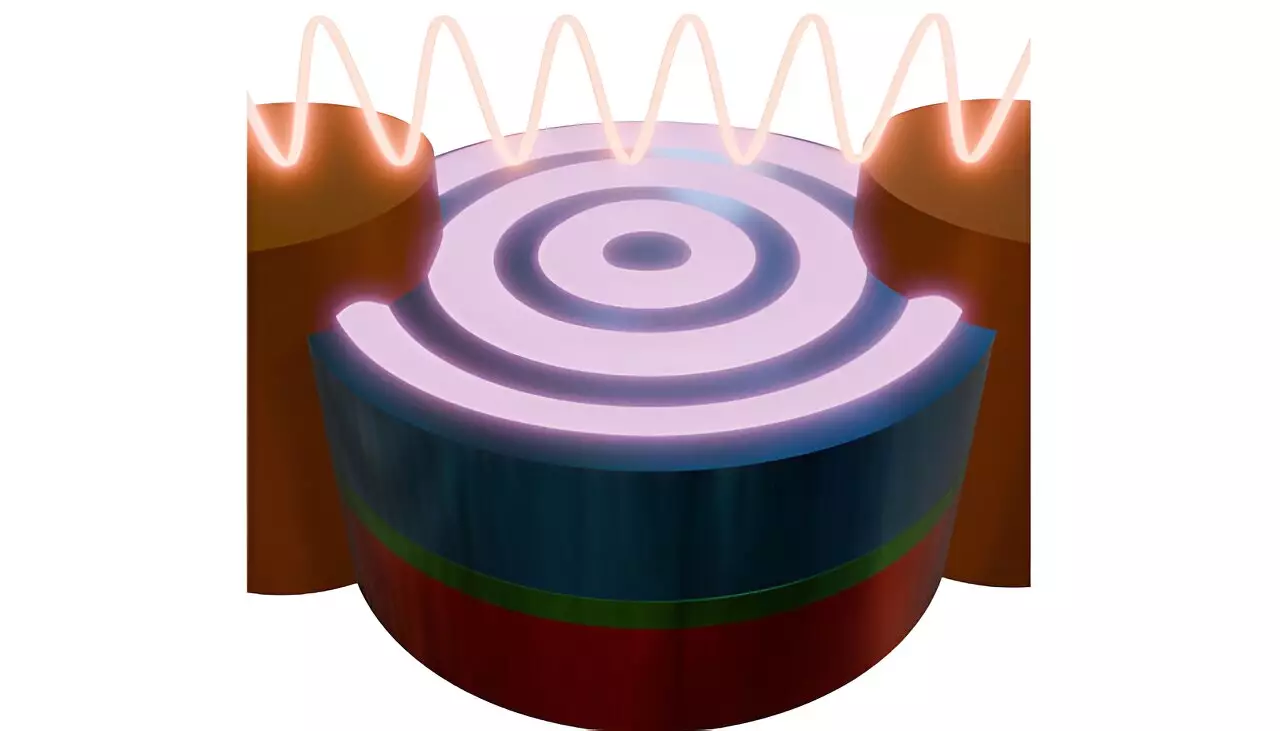In today’s fast-paced technological landscape, the quest for more efficient and compact computing devices is an ongoing challenge that shows no sign of abating. A recent study conducted by researchers from the University of Vienna, the Max Planck Institute for Intelligent Systems in Stuttgart, and the Helmholtz Centers in Berlin and Dresden sheds light on a breakthrough that could reshape the future of computing. This research, published in *Science Advances*, investigates the creation of reprogrammable magnonic circuits utilizing spin waves, providing not only a promising alternative to conventional technologies but also opening new avenues for energy efficiency.
As we continue to push the boundaries of technology, traditional computing devices, which rely heavily on billions of transistors within central processing units (CPUs), are facing significant physical hurdles. Built on complementary metal-oxide-semiconductor (CMOS) technology, these devices are grappling with increasing miniaturization challenges and escalating energy consumption. Concerns surrounding sustainability and power efficiency are prompting researchers to search for new approaches to computing architecture that can alleviate these issues.
The high energy losses associated with established technologies necessitate an exploration of alternative computational avenues. One promising contender in this search is magnons—the quantized spin waves that can propagate information and energy with minimal loss, mirroring the propagation of ripples emanating from a dropped stone in a tranquil lake. The innovative work emerging from the collaboration between Austrian and German researchers demonstrates the potential of harnessing these spin waves through advanced techniques.
A key aspect of the study lies in the researchers’ shift away from conventional nano-antenna methods for generating spin waves. Traditional methods faced challenges in efficiency and fabrication complexity. In contrast, the newly proposed technique employs an electric current flowing through a magnetic stack characterized by swirling magnetic patterns, resulting in a significantly higher efficiency of spin-wave emission. By optimizing the configuration of synthetic ferrimagnetic vortex pairs—where opposing magnetization dynamics occur in upper and lower layers—the team achieved remarkable advancements in generating short-wavelength spin waves.
As lead author Sabri Koraltan highlights, this innovative methodology surpasses previous techniques by several magnitudes in efficacy. The ability to generate spin waves efficiently presents a transformative opportunity for the development of magnonic devices capable of performing complex computing tasks. Researchers employed cutting-edge instrumentation, such as the high-resolution ‘Maxymus’ X-ray microscope at the BESSY II synchrotron in Berlin, to visualize the propagation of these spin waves at a nanoscale level and to observe their behavior at gigahertz frequencies.
One of the pivotal breakthroughs unveiled in the study is the dynamic steering of spin waves. By incorporating specialized materials that alter magnetization under strain, the directionality of spin waves can be meticulously controlled through marginal adjustments to the input current. This advancement signifies a critical leap toward the realization of active magnonic devices, capable of adapting to varying computational needs.
The implications of these findings extend far beyond simple alternative methods of computing. With the ability to redirect spin waves on demand, researchers can envision the development of reprogrammable magnonic circuits that offer unprecedented flexibility in computing tasks. This level of adaptability combined with enhanced energy efficiency marks a promising transition toward next-generation computing systems that prioritize resource conservation while maintaining high performance.
As the field of computing continues to evolve, this research represents a significant paradigm shift toward a more sustainable and efficient future. The ability to exploit spin waves for computing further fuels the potential exploration of magnon-based technologies. Through the collaborative efforts of leading researchers and institutions, we stand on the precipice of a new era in computing—one where the limitations of traditional technologies could be surmounted not by sheer power enhancements, but by leveraging the intrinsic properties of materials at the nanoscale.
By innovating in the realm of magnonics, scientists are not just addressing the immediate challenges of energy consumption and device miniaturization; they are charting a comprehensive path forward in the evolution of computing itself. The promise of reprogrammable circuits utilizing spin waves may be just the beginning of what could be a revolutionary shift in how information is processed, stored, and transmitted in the digital age. As we delve deeper into the potential of magnonic technologies, one thing is clear: the future of computing is being reshaped by the laws of physics and the ingenuity of science.


Leave a Reply